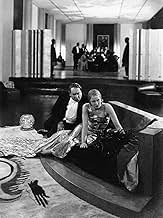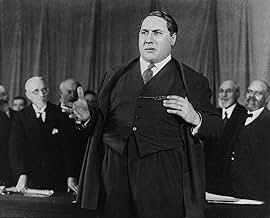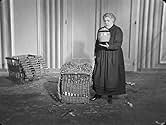Aggiungi una trama nella tua linguaThe business tycoon Nicolas Saccard is nearly ruined by his rival Gunderman, when he tries to raise capital for his company. To push up the price of his stock, Saccard plans a publicity stun... Leggi tuttoThe business tycoon Nicolas Saccard is nearly ruined by his rival Gunderman, when he tries to raise capital for his company. To push up the price of his stock, Saccard plans a publicity stunt involving the aviator Jacques Hamelin flying across the Atlantic to Guyana and drilling ... Leggi tuttoThe business tycoon Nicolas Saccard is nearly ruined by his rival Gunderman, when he tries to raise capital for his company. To push up the price of his stock, Saccard plans a publicity stunt involving the aviator Jacques Hamelin flying across the Atlantic to Guyana and drilling for oil there, much to the dismay of Hamelin's wife Line. While Hamelin is away, Saccard t... Leggi tutto
- Regia
- Sceneggiatura
- Star
- Line Hamelin
- (as Mary Glory)
- Massias
- (as Al. Mihalesco)
- Daigremont
- (non citato nei titoli originali)
Recensioni in evidenza
Undoubtedly influenced by Abel Gance's experiments with camera mobility, L'Herbier turned this very free, modern-day version of Zola's celebrated novel into a series of pretexts for outbursts of striking cinematic excess, creating a strikingly modern work marked by its opulent, over-sized sets and a complex, multi-camera shooting style. The result is a film resolutely split between narrative and spectacle, between straightforward storytelling scenes typically dominated by shot-reverse shot cutting and chaotic, exciting impressionist sequences, as when, at the Paris stock market (shot on location) a camera hanging from a pulley apparatus high above the trading floor sweeps down on the traders. The effect, presumable, means to evoke the irrational frenzy of capitalist from a decidedly right-wing perspective.
If Gance's Napoleon and Carl Th. Dreyer's La Passion de Jeanne d'Arc constitute the apex of big-budget historical reconstruction films in the French silent cinema, then L'Argent certainly can be taken as the culmination of the modern studio spectacular. With a five-million franc budget, L'Herbier was given privileged access to the Paris Bourse for three days of shooting (with 1,500 actors and over a dozen cameramen) and was permitted to electrify the Place de l'Opera in order to shoot a night scene of the huge crowd awaiting news of Hamelin's solo transatlantic flight. At the newly opened Studios Francoeur, Lazare Meerson and Andre Barsacq constructed immense set decors, including an enormous bank interior, several large offices and vast apartments, a dance stage for Saccard's celebration party, and an unusual circular room next to Gundermann's office whose entire wall length was covered with a giant world map.
Many of these studio spaces have smooth, polished surfaces and are stylized to the point of exhibiting little more than walls, ceilings, and floors. This stark simplicity, especially in such monumental designs, undermines any appeal to verisimilitude and tends to dissolve the boundaries differentiating one space from another. The indeterminacy of these decors, although exemplary of the modern studio spectacular, thus specifically functions to further abstract the film's capitalist intrigue. Together withe crowds of extras that often traverse the frame and chief cameraman Jules Kruger's selection of slightly wide-angle lenses and high- and low camera positions, especially for the frequent long shots or extreme long shots they produce a consistently deep-space mise-en-scene and larger than life capitalists. Furthermore, the highly stylized or generalized milieu of the film actually serves to foreground the nationalistic and class-based terms of the intrigue, articulated through the casting, and allows them to read all that more clearly.
The Modernizing strategy that shapes L'Argent's set decors and deep-space mise-en-scene was also governed, finally, by a loosely systematic discursive which many French filmmakers shared in the late 1920s. Generally, the French tended to privilege the specifically 'cinematic' elements of framing and editing - close ups (especially of objects), unusually high and low camera position, extensive camera movement, superimposition's and dissolves, various forms of rhythmic montage, associative editing. But L'Herbier's L'Argent offers another, perhaps even more interesting model for the way its reflexive style ultimately helps to articulate the film's critique of capital.
At least two particular features of this film practice loom large in L'Argent. The first feature as an absolutely unprecedented mobile camera strategy, whose high visibility and extreme dynamism render its effect peculiarly ambiguous. The range and extent of the film's camera movement is unmatched except perhaps by that in Gance's Napoleon (for which Kruger was also chief cameraman). Largely because of such unusual camera movements, in L'Argents space oscillates uncannily between the fixed and the fluid. A second feature of the film's discursive practice is its rather unconventional editing patterns, which sometimes work in tandem with camera movement. There is the uniquely persistent pattern of cutting a stable shot as a sudden camera movement becomes perceptible, which creates a slightly jarring effect in the film's rhythm that ruptures its sense of spatio-temporal continuity and foregrounds the very construction of filmic space-time.
The reflexivity of this discursive practice marks L'Argent as a Modernist text, of course, at least to the extent that the materials of the film medium and their deployment as a disruptice system become an ancillary subject of the film. L'Argents framing and editing techniques, in conjunction with set design and acting style or casting, more closely resemble those of Jean Renoir's Nana or Dreyer's La Passion de Jeanne d'Arc, both of which serve to subvert the conventions of another genre, the historical reconstruction. Yet reflexivity here bears a subversive significance that exceeds the genre of the modern studio spectacular precisely because of L'Argent is a story of capital.
L'Argent's achievement, in the end, rests on the correlation it makes between discourse, narrative, and the subject of capital. Capital is both everywhere and nowhere, echoing Marx; it motivates nearly every character in the film and is talked about incessantly, but it is never seen or - as the dung on which life thrives - even scented.
Nevertheless, L'Argent is a beacon of modernity, an over-sized hymn to music of light, where everything is rhythm, movement, and a fantastic spiral of financial manipulations. Even today, the subject is astonishingly relevant.
Films about the financial system (not necessarily about Wall street) are however nothing new. In 1928 Marcel L'Herbier adapted a novel of the same name by Emile Zola. The novel of Zola is situated in the second half of the 19th century but L'Herbier modernizes the story to the roaring twenties. Contrary to the above mentioned movies L'Herbier made his film before the crash of 1929.
By the way in 1983 Robert Bresson made a film of the same name. This is however not an adaptation of the same novel by Zola, but an adaptation of "The forged coupon" by Leo Tolstoy.
In "L'argent" there are two rival capitalists. The hot blooded predator Nicolas Saccard (played by Pierre Alcover) and the cold blooded reptile like Alphonse Gunderman (played by Alfred Abel). Neither of them is very sympathetic.
On top of these characters Brigitte Helm plays with baroness Sandorf a sort of "femme fatale" avant la lettre. Avant la lettre because the film noir would appear much later.
The storyline is not the best part of the movie. It is rather simple and is rushed in the last fifteen minutes. The storyline revolves around the slogan "Money is a faithfull servant but a terrible master". This combination of a quasi profound slogan and simple storyline reminded me of the slogan "Head and hands need a mediator. The mediator between head and hands must be the heart!" from "Metropolis" (1927, Fritz Lang) a year earlier. This is not the only link between the two films, because Alfred Abel and Brigitte Helm also played in "Metropolis".
The strong point of "L'argent" is not the storyline but the ambiance. With very innovative cinematograhy the film sketches the hectic, oppurtinistic and sometimes panicky atmosphere at the stock exchange. Tribute to cinematograhper Jules Kruger, who also made "Napoleon" (1927) with Abel Gance.
The tug of war between director and producer resulted in the latter excising thirty minutes from the film and not until its restoration half a century later were the lost scenes restored. Indeed it was not until the restoration that the film's acclaim finally matched its reputation and it has belatedly been acknowledged as one of the true masterpieces of silent cinema. As a bonus this same restoration has gifted us a highly charged score for piano composed and played by Jean-Francois Zygels.
The technical virtuosity of this film is simply stunning with the sweeping camerawork of Jules Kruger, low and high angle shots and Eisensteinian montage. L'Herbier's love of Art Deco is again evident in the magnificent sets designed by Lazare Meerson and André Barsacq. We are also treated to spectacular scenes in the Bourse, the fictitious World Bank, the Place de l'Opéra and the piéce de resistance, the financier Saccard's evening party.
L'Herbier has made sure that his film's immensity does not diminish the characters. This is surely Pierre Alcover's finest hour as Saccard, a monster of greed and rapacity who is also a pitiful creature. By arrangement with UFA the film also stars Brigitte Helm and Alfred Abel, both fresh from 'Metropolis'. Miss Helm as Baroness Sandorf has never been quite as sinuous and sensuous as she slithers around encased in Jacques Manuel's fabulous costumes. As she writhes on the sofa she epitomises the sheer carnality of wealth. The slight frame of Alfred Abel as Gunderman is in striking contrast to the corpulence of Alcover as his arch rival and his reptilian-like portrayal makes one think what a marvellous Professor Moriarty he would have made. As a contrast to the slinky Baroness we have the full-figured Marie Glory who is at her most appealing here in probably her finest role as Line Hamelin who is intoxicated by the lifestyle offered by Saccard's money but is not prepared to pay the price required. Dramatically effective is a rare appearance on film of Yvette Guilbert, former cabaret artiste immortalised by Toulouse-Lautrec, as a figure of Doom whose presence has always haunted Saccard and is there to witness his downfall.
This monumental piece is L'Herbier's greatest achievement and in his own words, 'the summit of my silent career'. No true cinéfile I am sure would disagree.
The film, in the main is about money, of course, the two main characters are Saccard and Gunderman, two financiers. Gunderman is a remarkably well dressed prissy man who is a kind of financial magus, like a Rothschild. Saccard owns a bank but he's down the food chain. Gunderman is intent on persecuting Saccard, we're not totally sure why but Gunderman alludes that he likes financial stability and abhors the destabilising nature of financial speculation. If only Gunderman had been advising the US government in the last few years! However to an extent Gunderman is a bit of a hypocrite as he is using rash speculation to annihilate Saccard.
Saccard uses Hamelin, a dare-devil aviator, to restore confidence in his bank. He arranges a publicity stunt, making Hamelin co-vice-chairman of the board and having him fly off in a plane to break the non-stop solo transatlantic flight record. Once in Guyana, Hamelin is then to set up some oil rigs on land he has options on. The cash from this operation will then restore the fortunes of the Banque Universelle, whilst the publicity stunt will move emotional speculation in BU's favour.
It's a two and a half hour film so there is a lot of plot. What's good though is the way the plot is worked. There is an incredible amount of suspense in the movie, it's dragged out until you're left holding tufts of hair. The level of camera-work is also astonishing, when you watch films from this era you're used to pretty static camera. Well l'Herbier is going bonkers with his camera. He has a vertical camera over the top of the Bourse (Paris stock exchange) swinging about in delirium whilst Hamelin readies to fly away. It's like watching cellular bodies under the microscope, all the little bodies polarised around the nucleus of the central dealing table.
There is a swinging shot of a street crowd that made my jaw drop, and I had to rewind. I suppose the most effectual shot for me though was quite a simple one where he let Hamelin's plane fly of the side of the frame. This is cinematic heterodoxy from what I'm aware. Usually with a shot of a plane you will see it disappear as a dot in the distance or the shot will just cut to another. But you feel a sense of loss as the plane flies off, as it's all cut with shots of Hamelin's wife, you feel what she's feeling, with her husband disappearing off for a desperate maniac flight over the abyssal blue ocean.
L'Argent is also a very glamorous movie, some of the costume jewellery on display in this movie is tres chic! The Baronin Sandorf, a very well cast lady (Brigitte Helm) who really is a human cobra, plays a minor character with Vicar of Bray leanings. She wears a solid gold headpiece and matching earrings at a party that are almost unreal. There's also some costume jewellery that Saccard gives to Line, the wife of Hamelin, that widen the eyes.
As in the early study for this film L'Herbier's 1921 "Prométhée... banquier", we are shown a banker who literally can't get away from his desk, tied down by phone calls, totally unable to give a desperate woman important human news. The movie is, however, not a paroxysm of anti-capitalist rage, it's more of a gorgeous heady melodrama that tries to have it's cake and eat it. However it does lead one's thoughts in the right direction ultimately.
The one real fault I can find with the movie was the ending 10 minutes which were clumsy. It felt like L'Herbier didn't know how to end his film. The very very last scene saved the day a bit.
Lo sapevi?
- QuizThere are 1,952 shots in the film, with an average shot length of just six and a half seconds.
- Versioni alternativeThe film was shown to the French press in December 1928 in a cut lasting about 3 hours and 20 minutes, however by the time the film had its first public screening in January 1929, producer Jean Sapene had ordered the length to be cut by half, unbeknownst to director Marcel L'Herbier and much to his and fellow filmmaker Marcel Carné's dismay. Much later, the film was restored to a running time of 2 hours and 25 minutes.
- ConnessioniFeatured in The Twentieth Century: The Movies Learn to Talk (1959)
I più visti
Dettagli
- Data di uscita
- Paese di origine
- Lingue
- Celebre anche come
- Money
- Luoghi delle riprese
- La Bourse, Paris 2, Parigi, Francia(interior: shots from the ceiling covering the crowd movement of buying and selling orders)
- Aziende produttrici
- Vedi altri crediti dell’azienda su IMDbPro
Botteghino
- Budget
- 5.000.000 FRF (previsto)
- Tempo di esecuzione
- 3h 15min(195 min)
- Colore
- Mix di suoni
- Proporzioni
- 1.33 : 1

































